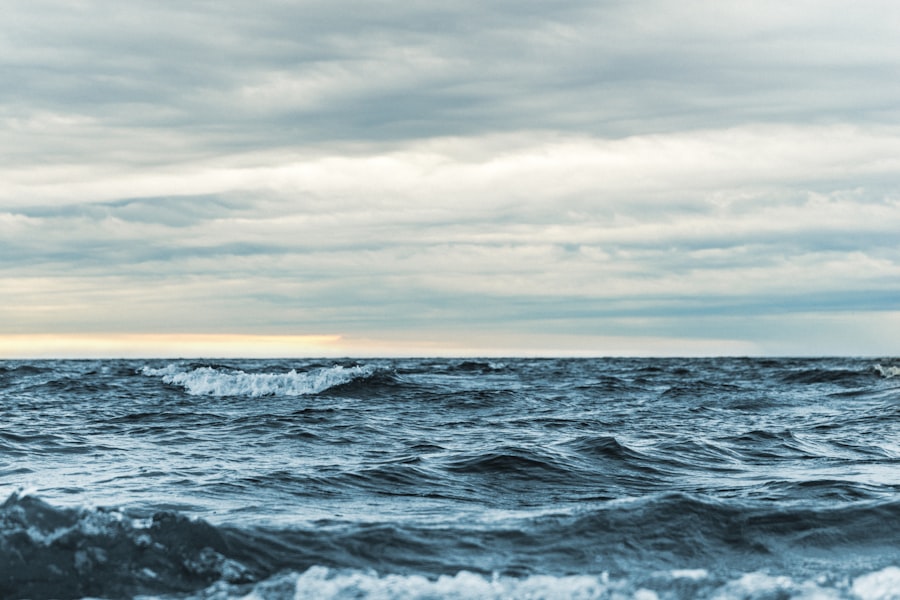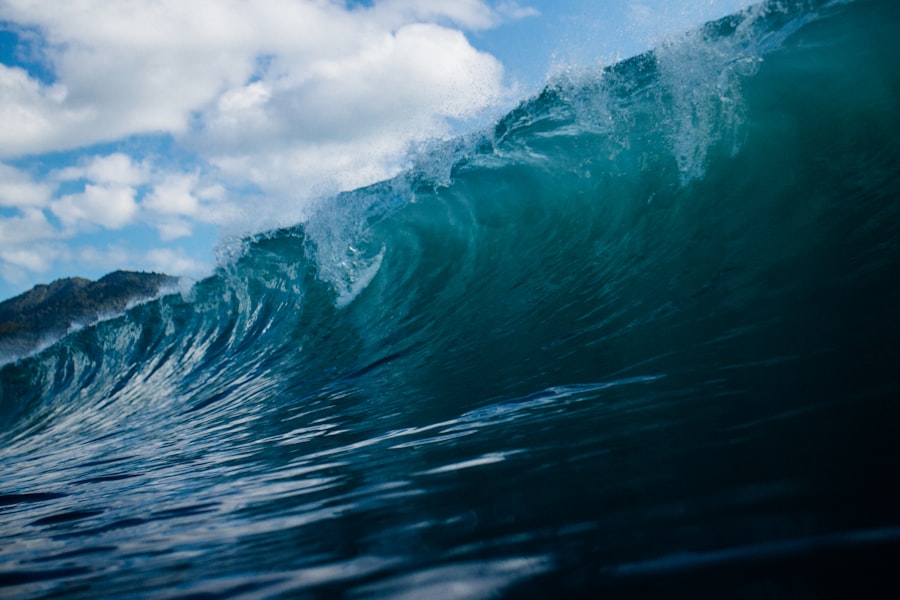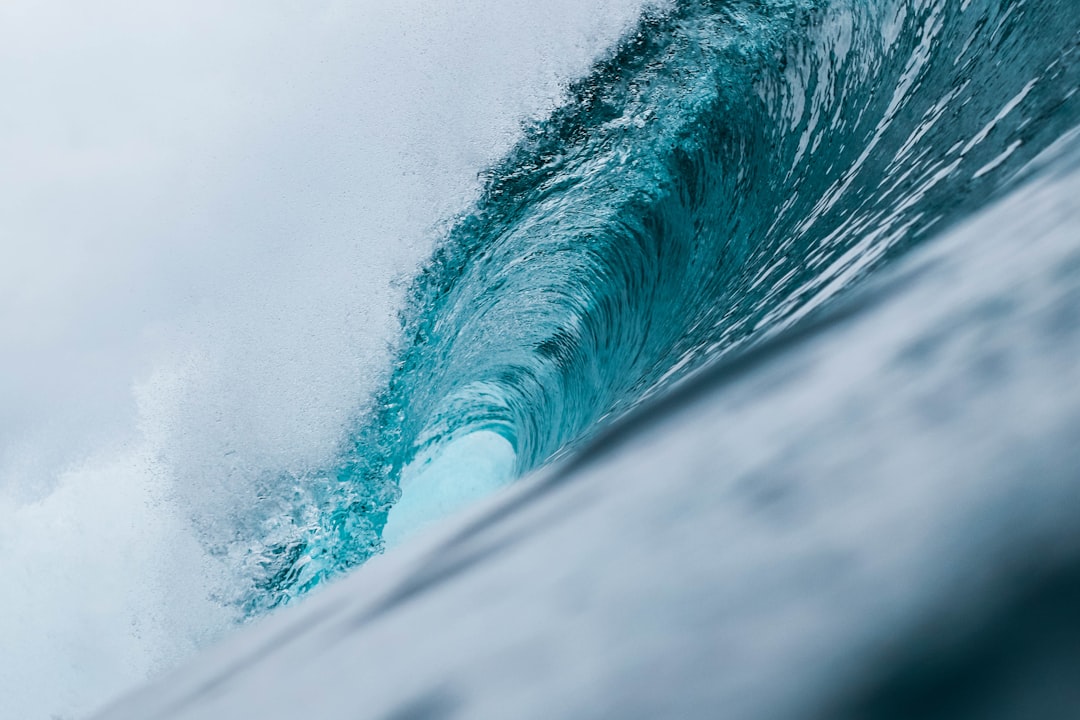The Drake Passage, a body of water located between the southern tip of South America and Antarctica, is renowned for its tumultuous seas and unpredictable weather patterns. This narrow stretch of ocean, measuring approximately 800 kilometers in width, serves as a critical maritime route for vessels traveling between the Atlantic and Pacific Oceans. Its significance extends beyond mere navigation; it is a region where the cold waters of the Southern Ocean collide with the warmer currents of the Atlantic, creating a unique and often treacherous marine environment.
The passage is not only a vital thoroughfare for shipping but also a site of immense ecological importance, hosting diverse marine life that thrives in its nutrient-rich waters. The Drake Passage has earned a reputation as one of the most challenging maritime routes in the world. Sailors and researchers alike have long been captivated by its fierce storms and towering waves, which can reach staggering heights.
The combination of strong winds, swift currents, and the geographical features of the passage contributes to the formation of what are known as monster waves. These colossal waves pose significant risks to vessels traversing the passage, making it essential for mariners to understand the dynamics at play in this formidable stretch of ocean.
Key Takeaways
- The Drake Passage is a treacherous stretch of water between South America’s Cape Horn and the South Shetland Islands of Antarctica.
- Monster waves, also known as rogue waves, can reach heights of up to 100 feet and are formed by the convergence of different wave systems.
- Monster waves pose a significant threat to ships, causing damage, injury, and even sinking in extreme cases.
- Weather systems such as strong winds and ocean currents play a crucial role in the formation of monster waves in the Drake Passage.
- Historical accounts of monster waves in the Drake Passage date back to the age of exploration, with many harrowing tales of encounters with these massive waves.
The Formation of Monster Waves
Monster waves, often referred to as rogue waves, are defined as waves that are significantly larger than the surrounding sea state. Their formation is a complex interplay of various factors, including wind speed, ocean currents, and wave patterns. In the Drake Passage, the convergence of these elements creates an environment ripe for the development of these massive waves.
The strong westerly winds that sweep across the Southern Ocean can generate waves that build upon one another, leading to the sudden emergence of a wave that can be two to three times larger than the average wave height. One of the primary mechanisms behind the formation of monster waves is known as wave interference. When waves traveling in different directions converge, they can combine their energy, resulting in a single wave that towers above its peers.
This phenomenon is particularly prevalent in the Drake Passage due to its unique geography and the presence of strong ocean currents. As waves propagate across the open water, they can encounter opposing currents that amplify their height and intensity, creating conditions conducive to the emergence of these formidable giants.
The Impact of Monster Waves on Ships

The impact of monster waves on ships can be catastrophic. Vessels caught in the path of these towering walls of water face significant risks, including capsizing and structural damage. The sheer force exerted by a monster wave can overwhelm even the sturdiest ships, leading to loss of cargo, equipment failure, and in extreme cases, loss of life.
The unpredictability of these waves adds to their danger; they can appear suddenly and without warning, leaving little time for crews to react. Maritime safety experts emphasize the importance of understanding wave dynamics when navigating through the Drake Passage. Ships must be equipped with advanced technology to monitor wave heights and weather conditions in real-time.
Additionally, crew training plays a crucial role in ensuring that sailors are prepared to respond effectively when faced with monster waves. Strategies such as adjusting course, reducing speed, and securing cargo can help mitigate the risks associated with these formidable ocean phenomena.
The Role of Weather Systems in Generating Monster Waves
| Weather System | Effect on Wave Generation |
|---|---|
| Low Pressure Systems | Can create strong winds and large swells, leading to monster waves |
| High Pressure Systems | Can cause calm seas and smaller waves |
| Frontal Systems | Can produce steep and powerful waves |
| Tropical Storms/Hurricanes | Can generate massive waves due to strong winds and low pressure |
Weather systems play a pivotal role in generating monster waves in the Drake Passage. The region is frequently influenced by powerful storms that develop over the Southern Ocean, characterized by intense low-pressure systems and strong winds. These storms can create ideal conditions for wave formation, with sustained winds driving waves to heights that can be perilous for vessels navigating through the area.
The interaction between different weather systems also contributes to the complexity of wave generation. For instance, when a cold front collides with a warm front, it can lead to rapid changes in wind speed and direction, further exacerbating wave conditions. Additionally, seasonal variations can influence weather patterns in the Drake Passage, with winter months often bringing more severe storms and higher wave activity.
Understanding these weather dynamics is essential for mariners seeking to traverse this challenging maritime route safely.
Historical Accounts of Monster Waves in the Drake Passage
Throughout history, there have been numerous accounts of monster waves wreaking havoc on ships traversing the Drake Passage. Sailors have recounted harrowing tales of vessels being engulfed by towering waves that seemed to rise from nowhere. One notable incident occurred in 2004 when a research vessel encountered a rogue wave estimated to be over 30 meters high.
The crew reported that the wave struck with such force that it caused significant damage to the ship’s structure but miraculously spared their lives. These historical accounts serve as stark reminders of the dangers posed by monster waves in this region. They highlight not only the unpredictability of nature but also the resilience and bravery of those who navigate these treacherous waters.
The Science of Predicting Monster Waves

Predicting monster waves remains a significant challenge for scientists and meteorologists alike. While advancements in technology have improved forecasting capabilities, accurately predicting when and where these colossal waves will occur is still fraught with uncertainty. Researchers utilize a combination of satellite data, ocean buoys, and computer modeling to analyze wave patterns and weather conditions in real-time.
One promising area of research involves studying historical data on wave occurrences in conjunction with current weather systems. By identifying patterns and correlations between specific atmospheric conditions and wave heights, scientists hope to develop more reliable predictive models. However, given the chaotic nature of ocean dynamics, there remains an inherent unpredictability that complicates efforts to forecast monster waves accurately.
Surviving Monster Waves: Strategies for Ship Crews
For ship crews navigating through the Drake Passage, survival during encounters with monster waves hinges on preparation and quick decision-making. Experienced mariners emphasize several strategies that can enhance safety when faced with towering waves. One critical approach is to maintain a steady course while reducing speed; this helps minimize the impact force when a wave strikes.
Crew members are trained to brace themselves and take cover in designated safe areas within the vessel during extreme weather events. Communication among crew members is vital; maintaining clear lines of communication ensures that everyone is aware of potential dangers and can respond effectively as situations evolve.
The Environmental Impact of Monster Waves
The environmental impact of monster waves extends beyond immediate threats to shipping vessels; they also play a role in shaping marine ecosystems within the Drake Passage. These colossal waves can influence sediment transport along coastlines and affect nutrient distribution in ocean waters. As monster waves crash against shorelines or underwater features, they can create turbulence that stirs up nutrients from the seabed, promoting biological productivity.
Moreover, understanding how monster waves interact with marine life is crucial for conservation efforts in this ecologically rich region. Researchers are increasingly focused on studying how these extreme wave events affect habitats and species distributions within the passage. By gaining insights into these dynamics, scientists hope to develop strategies for protecting vulnerable marine ecosystems from potential disruptions caused by climate change and increased shipping traffic.
The Future of Studying Monster Waves in the Drake Passage
As climate change continues to alter weather patterns globally, studying monster waves in the Drake Passage will become increasingly important. Researchers anticipate that rising sea temperatures and changing wind patterns may lead to more frequent and intense storm events, potentially increasing the occurrence of monster waves. Understanding these trends will be essential for ensuring maritime safety and protecting marine ecosystems.
Future studies will likely involve interdisciplinary approaches that combine oceanography, meteorology, and environmental science. By collaborating across fields, scientists aim to develop comprehensive models that account for various factors influencing wave formation and behavior. Additionally, advancements in technology will enable more precise monitoring and data collection, enhancing researchers’ ability to predict and understand these formidable ocean phenomena.
The Role of Technology in Monitoring Monster Waves
Technology plays a crucial role in monitoring monster waves within the Drake Passage. Advances in satellite imagery and remote sensing have revolutionized how scientists observe ocean conditions from afar. Satellite data provides valuable insights into wave heights, wind speeds, and storm systems developing over vast areas of ocean.
In addition to satellite technology, ocean buoys equipped with sensors are deployed throughout the passage to collect real-time data on wave activity and weather conditions. These buoys transmit information back to researchers onshore, allowing for timely analysis and forecasting efforts. As technology continues to evolve, it holds promise for improving safety measures for vessels navigating through this challenging maritime route.
Navigating the Fury of the Drake Passage
Navigating the fury of the Drake Passage requires a deep understanding of its unique challenges and dangers. From monster waves that rise unexpectedly to powerful weather systems that shape ocean dynamics, mariners must remain vigilant and prepared at all times. The interplay between natural forces creates an environment where respect for nature’s power is paramount.
As research into monster waves continues to advance, it offers hope for improved safety measures and better predictive capabilities for those who traverse this formidable stretch of ocean. By harnessing technology and fostering collaboration among scientists and mariners alike, humanity can navigate not only through physical waters but also through an ever-evolving understanding of our planet’s dynamic systems.
The Drake Passage is notorious for its tumultuous waters and massive waves, often challenging even the most seasoned sailors. The size of the waves in this region can be attributed to the confluence of the Atlantic, Pacific, and Southern Oceans, creating a perfect storm of conditions for large swells. For those interested in exploring more about the dynamics of ocean waves and their impact on maritime navigation, a related article on this topic can be found on MyGeoQuest. You can read more about it by visiting this page, which delves into the fascinating interplay of oceanic forces in the Drake Passage and beyond.
WATCH NOW! Drake Passage: Earth’s Deadliest Waters Revealed
FAQs
What is the Drake Passage?
The Drake Passage is the body of water between the southern tip of South America and the South Shetland Islands of Antarctica. It is known for its rough seas and challenging sailing conditions.
How big can the waves get in the Drake Passage?
Waves in the Drake Passage can reach heights of 30 feet (9 meters) or more during storms. The combination of strong winds and the open expanse of the passage can lead to extremely large waves.
What causes the large waves in the Drake Passage?
The large waves in the Drake Passage are primarily caused by the strong westerly winds that sweep across the Southern Ocean. These winds can generate powerful swells that lead to the formation of large waves.
Are there specific times of year when the waves are particularly large in the Drake Passage?
The waves in the Drake Passage can be particularly large during the austral winter (June to August) when storms are more frequent and intense. However, large waves can occur at any time of year due to the unpredictable nature of the Southern Ocean.
Are there any safety concerns for ships and boats traveling through the Drake Passage?
The large waves and rough seas in the Drake Passage can pose significant safety concerns for ships and boats. Vessels traveling through the passage must be well-equipped to handle the challenging conditions, and experienced captains and crews are essential for safe navigation.
